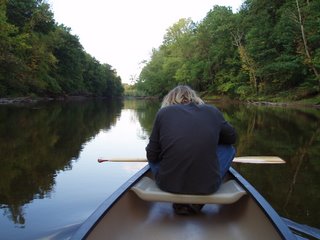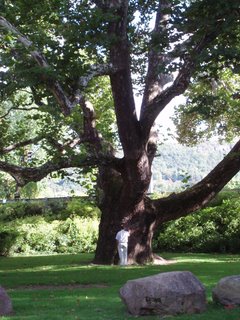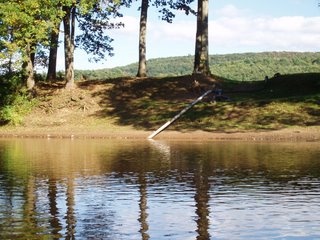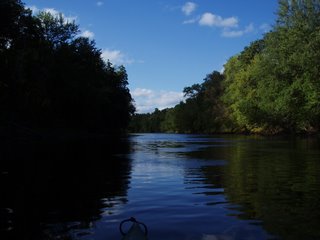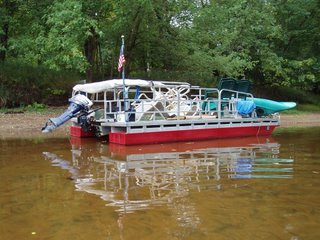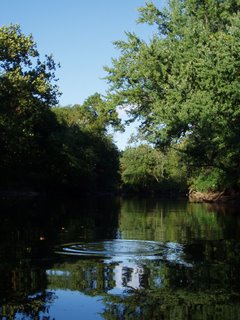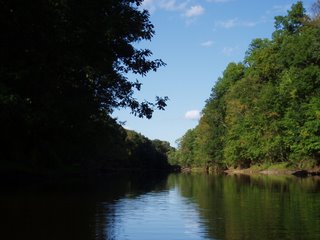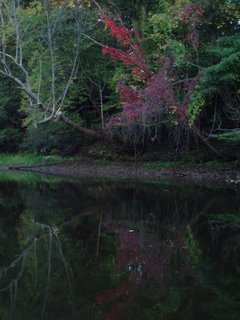
Expect the unexpected. In the days and weeks leading up to today, I’ve been entertained by a steadfast Egret that has since moved on (South?), a skittish heron, a few awkward looking turkeys high in the oaks that arch over the river, many bluejays squawking from points unknown along the shoreline, and the gracefully darting kingfisher that zips from bank to bank with an air of irritation at my presence. But today the unexpected happened.

I rounded the first bend remembering all of the trout rises that I had observed a few days earlier. On this particularly crisp afternoon, their activity was even more pronounced and as I floated and photographed the ripples, I felt honored to be, quite literally, surrounded by their ambitious efforts to procure a meal. As I picked up my paddle and said goodbye to the trout, I heard, to my right, a loud and uncharacteristic splash.
In recent days, there has been a significant amount of splashing from acorn drops all along my mile. But this is a distinct “plunk” that has become so familiar as to approach “white noise” while I paddle along. Today’s disturbance was startling, approaching a brief commotion. In an instant, I stopped my paddle strokes and moved my head sharply toward the sound to see a large bird rising from the middle of the river. My first instinct, an Osprey, proved to be correct, but not after doubting that this might not be the case for lack of previous experience with this species here along the Farmington. The Osprey, or fish hawk – a moniker with which it is tagged by some - has an unsual and exciting predatory approach toward the capture of the fish that make the vast majority of its diet. The bird will hover almost stationary about one to two hundred feet above its quarry until ready to fold its wings and, truth be told, falls in an almost uncontrolled and quite ugly drop straight down with talons extended until, in a chaotic eruption of water, feathers, and fish, it rises up from the strike with prey clenched and wings beating furiously until satisfactory lift enables a more graceful flight to an awaiting branch and a satisfying meal.
Of course, my excited presence led to an interrupted dining experience for my friend. And my efforts to photograph her majestic form high in each successive perch failed for lack of appropriate camera lens. Never-the-less the experience was a nostaligic joy. Some twenty years ago I spent several summers working for a good friend who raised oysters in a brackish water pond on a small island off the coast of New London, Connecticut. Nesting nearby and joining our long summer days of outdoor work was a pair of adult Osprey with noisy and needy offspring. The fish hawk, like so many of the other large raptors, has a voice that is high pitched and completely out of character for such a large bird. Yet, the cry of the Osprey is one I will always be able to recognize within seconds of hearing it. I found that I could only smile at the fortune presented by this wonderful surprise.

The paddle ended just as the sun was setting and as a waxing crescent moon rose over the tops of the oak and locust trees which must be getting close to turning hue and shedding another year’s production of foliage. I eagerly await the days of October when the autumn color will bring a visual saturation to my journeys along my mile of river.



